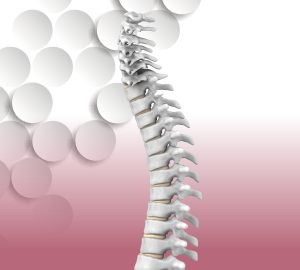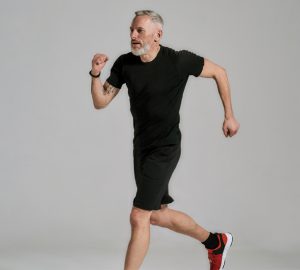Eventually we all change with time, but there are procedures that can make you feel and look more youthful. Our experts discuss how to tighten sagging skin and eliminate unsightly bra bulge. They reveal when eyelid surgery might be covered by insurance and explain those confusing antiaging creams.
[bra bulge & back fat]
Dr. Richard Moore, The Lifestyle Center Medical Director:
Bra bulge, excess fat around the bra line, tends to be fibrous and difficult to treat. Traditional liposuction doesn’t work well, but Tickle Lipo does. It uses a vibrating cannula that whips and liquifies targeted fat, which then is aspirated. We also use it to treat lower back fat. It enables us to suction unwanted fat and sculpt the body. Less invasive treatments include BodyFX and CoolSculpting. BodyFX uses radiofrequency energy to heat fat to the temperature where it becomes fragile. A jolt of energy then is sent through it, breaking down the cell membranes and killing about 30 percent of the fat cells. And because you are raising the temperature of the skin, some skin tightening occurs. BodyFX is a nice option for someone who doesn’t want to have downtime or anything invasive. CoolSculpting uses a vacuum pump to suck up the skin and freeze the fat underneath. The fat cells die, shrink and are eliminated by the body. The disadvantage with CoolSculpting is that the treatment area is limited to the size of the suction cup, whereas BodyFx has a handpiece you move along skin tissue.
Dr. Brock Ridenour, Ridenour Plastic Surgery and Professional Skin Care:
First, try diet modification and exercise to battle bra bulge and back fat. Weight-resistance training, especially exercises targeting the development of the trapezius and latissimus muscles in the back, also helps establish the width of the frame, which may distribute fat better. Residual pockets of bra bulge and back fat most often are treated nonsurgically. If you have a discrete bulge and good skin tone, you’re a candidate for several different modalities, including freezing the fat with a device like CoolSculpting. If you have a discrete bulge and skin laxity, some sort of device that employs heat will be more effective. These laser-liposuction devices use laser energy to dissolve fat and tighten the area between the muscle and the overlying skin, then suction to remove excess fat tissue. Another device that shows great promise but is not yet FDA-approved for this purpose is the ThermiRF, a temperature-controlled electrode that gets inserted into fat. The heat melts fat and contracts the skin. Some surgeons recommend a posterior body-lift procedure, but I’m not a big proponent. The main risk is an unsightly scar.
[facial skin tightening]
Dr. Keith Thomae, Thomae Surgical Cosmetic Surgeon:
ThermiRF is the newest nonsurgical tool to tighten facial skin. Unlike other procedures that go through the skin, ThermiRF goes under the skin. It uses heat from radiofrequency waves to shrink the attachments between collagen fibers, which tightens skin. Collagen acts like a scaffold and is the main structural component in connective tissue. Currently ThermiRF is FDA-approved to treat frown lines on the face. But it also helps tighten the jawline and banish under-the-neck skin laxity. This application is off-label, but the results are good. The procedure is minimally invasive and requires local anesthesia. There’s some residual swelling for a week, but skin tightening occurs gradually and tops out at the third month. I think ThermiRF is better than a laser because it has a double safety-feature mechanism. An electronic shut-off device at the tip of the needle allows us to provide enough warmth for the skin to contract but not burn, while an exterior infrared camera aimed at the patient’s face monitors the skin temperature.
Dr. Judith Gurley, Board-Certified Plastic Surgeon:
Laser physics has come to the point where we can reverse the aging process and make facial skin healthier than it’s been for years. We can now produce laser beams that
penetrate the skin in varying depths in a fractionated fashion, so we’re not stripping skin like a chemical peel. Chemical peels have a place, but lasers provide more aggressive treatment deep under the skin. The heat generated by the laser stimulates collagen. More important, fractionated lasers can skip certain areas. Consequently, patients see the benefits of a laser treatment with fewer side effects than you’d get with a uniform beam. Lasers improve the skin’s surface, but they don’t tighten it like a face-lift, nor do they reposition skin. They thicken and rejuvenate the skin, minimize pores, and improve skin tone and texture. Fat injections also rejuvenate the skin. We use the patient’s own fat, purify it and then transfer it back on the face where fat used to be. You don’t want only tighter skin—you want tighter, healthier and better skin. Even patients who get a face-lift often undergo fat grafting and laser treatment.
[when is eyelid surgery considered a medical necessity?]
Dr. John Holds, an oculoplastic surgeon at Ophthalmic Plastic and Cosmetic Surgery Inc., encounters this question routinely in his practice. “Very specific criteria must be met for insurance companies to pay for the eyelid surgery known as an upper blepharoplasty,” he says. “You have to present a photograph that shows tissue hanging over the eye, often almost down to the mid-pupil, and you must undergo a visual field test that shows a significant degree of visual obstruction.” Even if all these criteria are met and the procedure could lead to significant improvement in a patient’s field of vision, some companies refuse to pay for an upper blepharoplasty, he adds. Medicare also has become more selective marked the procedure for special audit, Holds notes. “Medicare randomly selects claims filed by providers, looking for signs of medical fraud where a patient who didn’t meet all the criteria underwent the surgery with Medicare footing the bill. They can examine back data and request reimbursement,” he warns.
[tighten up: dealing with loose skin after gastric bypass]
Dr. Terry Myckatyn, West County Plastic Surgeons of Washington University:
A big hurdle after gastric bypass is whether the patient is a suitable candidate to undergo the additional surgery to remove excess skin left after weight loss. There’s a high rate of malnutrition in gastric bypass patients, even though they used to be overweight and overnourished. So before we perform any skin removal or body contouring technique, bypass patients must be nutritionally sound. They also must have achieved their target weight loss and maintained it for at least three months. Some surgeons prefer six months. The procedures I think provide the most benefit are a lower body-lift (basically a tummy tuck around the torso), or a breast-lift (mastopexy) combined with implants. I don’t think patients derive quite as much benefit from a thigh or arm lift. You can get some improvement, but there are shortcomings with those procedures, including a high risk of infection and scarring. Unlike gastric-bypass surgery, subsequent skin removal and body-contouring procedures are not typically covered by insurance. Financing is available.
Dr. Michele Koo, Plastic Surgeon:
A patient is ready for post-bariatric body reconstruction after s/he has lost at least 50 to 75 pounds and kept it off for three to six months. Typically, one to three surgeries are needed before the patient feels ‘normal.’ A good time to intervene with reconstructive surgery is when the patient is unable to increase their level of exercise because of the weight of surplus skin. They often become discouraged at that point. I typically do arm and breast surgeries together, and tummy and thighs together, unless there’s a large amount of excess skin. The more skin that’s removed, the longer the scars, although they fade with time. Arm scars tend to heal thicker and wider. Thigh scar tends to heal slightly wider, and tummy tuck and breast scars tend to heal fairly well. Post-bariatric body reconstruction is extremely effective and can boost self-esteem. However, it requires patience to persevere through multiple surgeries staged over several months, followed by wound healing and a fairly lengthy recovery period.
[antiaging creams]
“Antiaging creams work,” says dermatologist Dr. Joseph Muccini of MidAmerica Skin Health & Vitality Center. “The tricky part is knowing what to look for.” A skin care product might contain a cocktail of components. “The problem is, they may not be compatible together,” he says. “They may not be formulated correctly to provide benefit, or they may take a long time to work, or they produce minimal results and still cost a lot of money.” Most people know that trentinoin, a vitamin A derivative, is helpful. They also know that topically applied Vitamin C is beneficial. “But the product must be formulated and packaged in such a way that the ingredients are protected and are bio-available to the skin,” Muccini explains. Potent premium brands, like SkinCeuticals and Epionce, meet these criteria but aren’t available at your local drugstore. You’ll find them at many medical practices, spas and high-end stores. “Determine your goals and have a conversation with a skin care professional, either an aesthetician or a doctor, who can help make sense of the hundreds of products out there,” Muccini advises.








